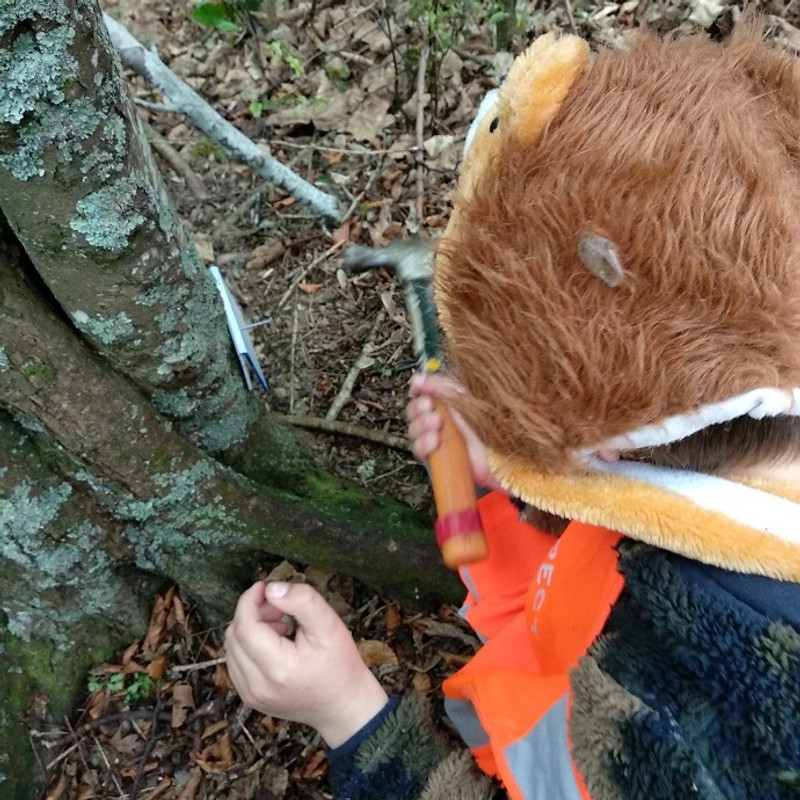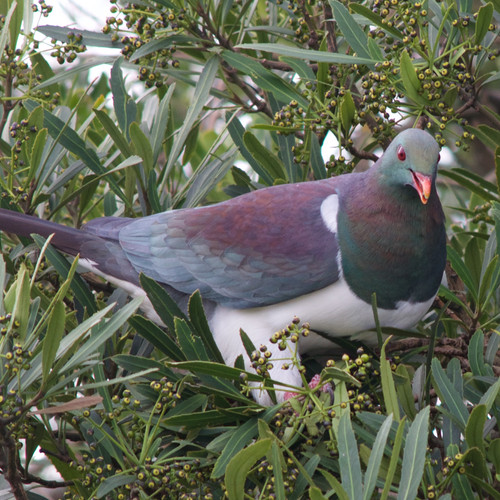Find Chew's In Your Backyard!
Chew cards are one of the detection tools in our predator monitoring toolkit that help us to identify the presence of mammalian predators that might harm our native wildlife. Chew cards are made of plastic ‘corflute’ with many small channels that are filled with a peanut butter based (non-toxic) lure and can provide clues to help us to detect which mammalian predators are visiting our backyard. We can select the right trap to target specific species and.
The great thing about chew cards is that they are easy to use and place in your backyard - using just a hammer and nail. Once set out, animals will be enticed by the lure, have a nibble and leave their bite (or chew) marks for us to identify. Different kinds of animals have different kinds of dentition (teeth shape and arrangement) giving rise to different marks seen on the chew cards.
For example, mice chew one side of the card, leaving fairly clean edges using their incisor teeth. Mice have four incisor teeth, two on their upper jaw and two on the lower. They don't have canine teeth, but do have premolars and molars.
Rats, while also having incisor teeth, generally leave ragged edges and chew away whole pieces of card. Like mice, they have incisors, pre molars and molars with no canine teeth. Ship rat chews and Norway rat chews are virtually indistinguishable from each other.
Animals with pointy canine teeth like stoats and ferrets, will leave puncture marks on the cards. Their canine teeth are comparatively large compared to their incisor teeth. They have comparatively fewer premolar and molar teeth. Usually, just their canine teeth will leave impressions. Measuring the distance between these impressions can provide a clue as to which animal has left them as the pairs of impressions produced by different carnivores are spaced differently.
Hedgehogs also have canine teeth, but only the canines on the upper jaw are predominant. On the lover jaw, they have two predominant blunt incisors. This produces cards with small oval shaped puncture marks on one side and crush marks on the other.
Possums leave crushed edges on the chew cards due to their incisor teeth. Possums have four incisor teeth on their upper jaw and two on the lower. They also have small canine teeth, premolars and molars further back. Possums generally leave distinct tooth impressions that look notched due to the gap between their incisor teeth.
For further information, check out pestdetective.org.nz or for a further in-depth analysis check out Landcare Research or to chat, come along and see us at the Trap Library at the Valley Project or email openvue@northeastvalley.org!
Do you have an awesome nature based story you’d like to share? We’d love to hear from you! Please be in touch with us at openvue@northeastvalley.org.
Valley Voice Kids' Corner Word Search Solution
Did you manage to find all of the words in this word search in the May 2021 Valley Voice?
Word search design from thewordsearch.com






